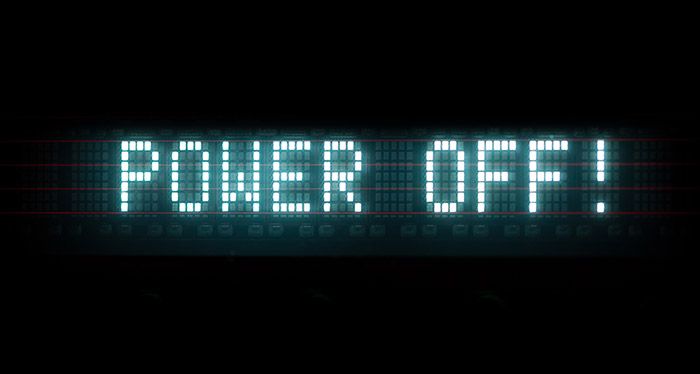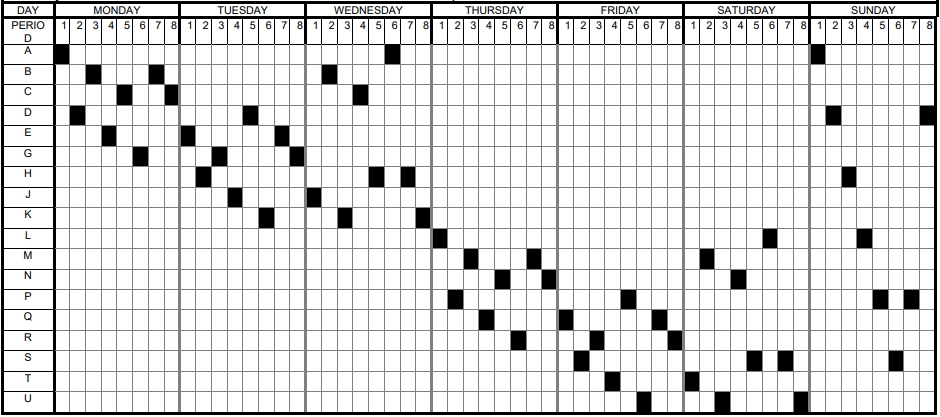Could Your Servers Suffer Power Cuts This Winter?
Views, News & more

John Pettigrew, CEO of the UK energy distributor National Grid has warned that Britain could face blackouts this winter.
The blackouts could occur on "really, really cold" weekdays in January and February 2023 if there were reduced gas imports from Europe.
There is a chance problems could occur sooner than that, however. Electricity supply has been tight recently.
At one point on November 28th 2022, National Grid ESO predicted the UK would have 38,784 MW of capacity to meet 38,338 MW of demand. Had demand been just 1.17% higher than forecast, additional supply would have been needed. There was a similarly close call on November 22nd.
As the weather gets colder, keeping the lights on will become more challenging.
Update: On Sunday 22/01/2023, National Grid ESO forecast tighter than usual supply for the next day and placed three coal-fired power station units on standby. It also announced that the Demand Flexibility Service - that pays electricity consumers not to consume electricity - would be activated for the first time, to reduce demand on 23/01/2023 at 5pm-6pm. On Monday 23/01/2023, it announced the Demand Flexibility Service would apply on Tuesday 24/01/2023 from 4.30pm to 6.00pm and three coal-fired power station units would be put on standby.
Update: According to National Grid ESO, on Sunday 22nd January 2023, 13.7% of electricity was from imports and 2.2% was from coal. On Monday 23rd, 13.2% was from imports, and 2.5% from coal. Put another way, there would have been an electricity shortfall of just over 15% had mainland Europe not been able to export spare electricity to us, had coal power stations not been temporarily saved from retirement and had domestic electricity producers not been able to increase production.
Update: On Tuesday 7th Februrary 2023, two coal-fired power station units were put on standby, due to tight supply forecasts.
Update: On Tuesday 7th March 2023, one coal-fired power station unit was put on standby, due to tight supply forecasts. In a separate scheme four of National Grid ESO's five "winter contingency coal units" were warmed ready for use, with two being used. From April 2023, the number of winter contingency coal units kept around will drop to one, with just Uniper SE's coal plant in Ratcliffe left should a similar situation arise.
How the Gas Supply Crunch Could Hit UK-Hosted Servers
Almost all UK-hosted servers receive power from the UK's national electricity grid. 30-60% of this electricity is generated by gas-fired power stations.
Britain typically offshores gas storage to mainland Europe, exporting gas during the summer months, importing some of it back when the weather is cold. Due to a reduction in Russian gas exports to mainland Europe, there may not be as much spare gas left for Britain to import. This could be a problem, as Britain can only store around nine days worth of gas.
Around half the gas used in the UK comes from the UK. The supply of this gas is assured. The rest of the gas we need arrives via pipelines from mainland Europe and via shipments of Liquefied Natural Gas from the US, Qatar, Peru and Angola. The UK competes with international buyers for many of these LNG shipments.
Should there be a gas shortfall, households will likely receive the gas they need. Meanwhile, industrial users may face supply reductions. This could impact the gas-fired power stations helping to power your company's UK-hosted servers.
Ordinarily, shortfalls in domestic electricity generation can be overcome by importing electricity from mainland Europe via undersea cables. However, given the reduction in gas-fired electricity generation in Europe this winter, that option may not be available when Britain needs it.
So, what's the plan to keep the lights on?
Plan A: Burn More Fossil Fuels and Restart Old Nuclear Plants
Several UK-based coal-fired power stations that were set to shut have been given a temporary reprieve. The UK and mainland Europe will also import more Liquefied Natural Gas.
Germany has decided to keep its nuclear power stations online for longer. France's EDF is trying to get more of its nuclear plants back online.
Plan B: Reduce Demand for Gas and Electricity
Some UK consumers with smart metres will be paid to voluntarily use less energy than usual during periods of peak demand.
Meanwhile, in Croatia and Greece, governments have introduced temperature limits on central heating. Spain is forcing shops to turn off window lighting after 10pm. And Germany no longer lights public monuments at night. Some authorities there are stopping the use of hot water in schools and gyms.
If energy reductions fall short, Britain could face electricity blackouts.
Plan C: Implement a Rota of 3-Hour Blackouts
Planned blackouts would need to be approved by the UK Government. The Department for Business, Energy and Industrial Strategy's Emergency Response Team would review a schedule of blackouts proposed by National Grid ESO.
Here's an example blackout schedule with the lightest load-shedding, taken from the UK Government's Electricity Supply Emergency Code:

Most UK electricity demand is split over 18 load blocks, labelled A to U. Around 5% of electricity demand is connected to each block. You can tell which load block your home or business is connected to by looking at your electricity bill. Your load block will be prominently displayed, without explanation.
There's also a special load block for protected sites such as hospitals, regionally-important Police/Fire/Ambulance sites, major train stations, the London Stock Exchange etc. Sites on this list are exempt from intentional power cuts.
Depending on the extent of any power shortfall, one or more load blocks would be subject to a pre-scheduled 3 hour power cut (see time periods 1 to 8 above).
The rota is designed to ensure the pain is spread fairly. Typically, grid users would likely face no more than 3 hours of downtime at a time. Unless things really go wrong.
How long might the nationwide electricity shortage last? Energy consultancy LCP suggests we might be looking at 10 hours of blackouts this winter.
How Can I Protect My Servers from Power Cuts?
Unless you qualify for the 'protected sites list' - your best bet is to host your server somewhere where there is an Uninterruptible Power Supply (UPS) and backup generators able to cover power cuts of just over three hours.
The most practical way to do this is to move your physical servers or virtual machines to a proper data centre, for example by making use of colocation or cloud hosting services.
We host our cloud servers in data centres operated by Equinix. All the facilities we use have uninterruptible power supply (UPS) and backup generators. Given the increased likelihood of power cuts this winter, Equinix has increased the amount of diesel it stores by 50% so that its backup generators can handle longer-than-usual outages.
Improving Disaster Recovery Further
Hosting your server workloads in proper data centres has several advantages beyond protecting them from power cuts. You benefit from advanced fire detection and suppression systems, strong physical security, CCTV, industrial strength cooling and resilient connectivity.
However, relying on just one data centre is a mistake. That's why the public cloud providers tend to offer the ability to host workloads in separate 'Availability Zones.' But it can be fiddly to take advantage of such zones.
There are easier ways to add resilience. Our VMware-based cloud hosting service hosts workloads using a server cluster stretched across multiple data centres. If a data centre goes down, your server-based workloads can be switched to an alternative data centre almost instantly.
Regular malware-resistant backups, stored in an off-site location, are an essential element of protecting your data. Cloud backup services make off-site backups easy, doing way with the need to transport backup media physically.
For those who want to reduce the time it takes to restore their server platform from a catastrophic loss, it's worth considering Disaster Recovery as a Service. DRaaS involves restoring a clone of your system to the cloud in seconds, rather than trying to restore everything from backups over a number of hours or days.
You Have the Power
No-one really knows whether the UK will face power cuts this coming winter. There may be, there may not be. You can't control that. What you can control is whether your organisation is prepared for such cuts.
A number of hSo customers have asked us about our plans to ensure business continuity in the event of power cuts. You can read or download our statement on the matter.
If your organisation is still hosting business-critical servers at a site without backup generators, now would be a good time to review that setup. The best option is usually to switch to colocation or cloud hosting services, rather than add backup generators.
To discuss your hosting options give us a call on 020 7847 4510 or get in touch via the form below.
If you'd like to keep an eye on the UK's power situation, we'd suggest signing up for National Grid ESO's free alert service. It sends out a GB Electricity Capacity Market Notice whenever spare capacity is expected to fall below 500 MW.
Also pay attention to the proposed Demand Flexibility Service. When electricity users are being paid to use less electricity than normal, it will be a sign that capacity and demand are too close for comfort.
Update: On 22/01/2023 it was announced that the Demand Flexibility Service would be activated for the first time on 23/01/2023 between 5pm and 6pm. Three coal-fired power station units were also put on standby - West Burton U1 and Drax U5 & U6, as National Gruide ESO's forecasts "show[ed] electricity supply margins... expected to be tighter than normal." Two coal-fired power station units were also put on standby on 07/02/2023. Under various schemes, a total of five coal-fired power station units were put on standby on 07/03/2023.
Get in touch
020 7847 4510
We may process your personal information in order to send you information you request, measure and improve our marketing campaigns, and further our legitimate interests. For further details, see our privacy policy.
Contact us
-
- Head Office:
- hSo, 50 Leman Street, London, E1 8HQ
- Switchboard:
- 020 7847 4500
- Support (24x7):
- 0333 200 3337
- support@hso.co.uk
- Marketing & Sales:
- 020 7847 4510
- info@hso.co.uk

















